Plants For Bumblebees
A link to Lori’s Blog.
* Denotes a medicinal plant for bees
BOLD denotes special interest for bumblebee plants (buzz pollinated, longer corollas or special relationships, ie trip pollination)
Native and Near Native Shrubs: Willow (Salix spp.) maybe the most important plant for honeybees and significant for bumblebee queens, Red Osier Dogwood (Cornus sericea) is another good one for weavers, Snowberry (Symphoricarpos albus) also an essential bee plant because it blooms over a period of months, Black Twinberry (Lonicera involucrata) Loads of nectar, berries used for dye, Hairy Manzanita (Arctostaphylos columbiana)
June Gap: Ninebark (Physocarpus spp.) native species is Pacific Ninebark (Physocarpus capitatus), Spirea spp., native is Spirea douglassi, Mock Orange (Philadelphus lewisii), Native Roses
Edible/Drinkable Shrubs: Salmonberry (Rubus spectabilis), Oregon Grape (Berberis spp.), Kinnikinnik (Arctostaphylos uva-ursi), Blueberries (Vaccinium spp.), Evergreen Huckleberry (Vaccinium ovatum), Wood’s Rose (Rosa Woodsii), Prickly Rose (R. acicularis), Blueberry Vaccinium spp., Potentilla spp.
Sumac (Rhus spp.), Blue Elderberry (Sambucus cerulea), Currants (Ribes spp.) clove currant and red-flowering don’t plant European black currants, Raspberry (Rubus spp.) Thimbleberry (Rubus parviflorus), High Bush Cranberry (Viburnum trilobum), Labrador tea (Rhododendron groenlandicum),
Native and Near-Native Trees: Arbutus (Arbutus menziesii), Chokecherry, Crabapple the native is Pacific Crabapple (Malus fusca), Pincherry, Saskatoon, Western Mountain Ash (Sorbus scopulina)
Native Vines: Virgin’s Bower Clematis (Clematis ligustifolium) beware of invasive look-alikes, Trumpet honeysuckle (Lonicera ciliosa)
Exotic Trees: Redbuds (Cercis spp.), Hawthorn (Crataegus spp.), Linden (Tilia spp.) avoid silver linden (Tilia tomentosa); Stone Fruit Trees: apple, cherry, peach, apricot, pear, quince, and plum
Exotic Shrubs: Spirea spp., Climbing roses, Potentilla spp. important late-blooming shrub
Edible Native Perennials: Native violets, Nodding onion (Allium cernuum) and other native alliums
Early Shade-tolerant Perennials: Bleeding heart (Dicentra spp.) toxic, Solomon’s Seal (Polygonatum spp.), Canadian Columbine (Aquilegia canadensis) and other Aquilegia spp. toxic,
Native and Near Native Perennials: Spring-gold (Lomatium utriculatum) an early-blooming umbel esp. important for short-tongued bees like the Western Bumblebee
Deltoid Balsamroot (Balsamorhiza deltoidea), Large-leafed Avens (Geum macrifolium) and other Geum spp.
Broad-leafed Shooting Star (Dodecatheon hendersonii), Milk Vetch (Astragalus spp.), Native Silvery Lupin (Lupinus argenteus) and other Lupinus spp., Blue-eyed Mary (Collinsia spp.), Broomrape (Orobanche spp.) Yellow Rattle (Rhinanthus minor), Native Larkspurs (Delphium menziesii ) HIGH toxicity warning
Penstemon spp., Canadian Milk Vetch (Astragalus Canadensis and other native spp.), Blue Gentian (Gentiana spp.), Monkey Flower (Mimulus sp.)
Camassia spp., Woodland Strawberry (Fragraria vesca), Yarrow (Achillea Millefolium), Potentilla spp. native species and cultivars are great, Common Harebell (Campanula rotundifolia and other native and exotic spp.),
Plains Prickly Pear (Opuntia polyacantha), Gumweed (Grindelia spp.), Rocky Mountain Bee Plant (Cleome serrulata), Anise Hyssop (Agastache foeniculum), Erigeron spp., Native Lilies (Erythronium spp.), Jacob’s Ladder (Polemonium spp.), Cranesbill Geranium (Geranium spp.)
Near Native Annual: Bienenfreunde aka Lacy Phacelia (Phacelia tanacetifolia) very important bee pasture plant for nectar and pollen—stagger-plant this throughout the growing season. Good for honeybees and bumblebees.
Late-Blooming Native and Near-Native Asteraceae: Joe Pye Weed (Eutrochium spp.) Blanket Flower (Gaillardia spp.), Tickseed (Coreopsis spp.), Pearly Everlasting (Anaphalis margaritaceae), Asters (Symphyotrichum spp.), Goldenrod (Solidago spp.), Coneflowers (Echinacea spp.), Coneflowers (Ratibida spp.), Black-eyed Susan (Rudbeckia spp.), Gold Star (Crocidium multicaule)
Medicinal Exotic Perennials: *Turtlehead: (Chelone glabra), *Sage (Salvia spp.) *Meadow Sage (Salvia pratensis), *Oregano, *Thyme, *Dragonhead (Dracocephalum spp.), *Lavender (Lavandula spp.)
Exotic Perennials: Catmint (Nepeta cultivars) N. cataria can be invasive. Very important long-blooming plant for honeybees and bumblebees
California poppies (Eschscholzia californica) can be weedy, Liatris spp., Comfrey (Symphytum spp.), Red Clover (Trifolium pratense), Cardoon (Cynara cardunculus) comes with an invasive warning, Hollyhocks (and other Malva spp.), Wine Cup (Callirhoe involucrata), Russian Sage (Perovskia atriplicifolia), Sea Holly (Eryngeum spp.), Globe Thistle (Echinops ritro), Caterpillar Flower (Phacelia bolerandi) works in dappled shade, Masterwort (Astrantia major), Sneezeweed (Helenium autumnale), Verbena spp.,
Exotic Annuals: Borage (Borago officinalis) NB for nectar, Hairy Vetch (Vicia villosa) can be weedy, Moroccan Toadflax (Linaria maroccana) plant instead of invasive toadflax spp., Blue Shrimp Plant (Cerinthe major), Globe Gilia (Gilia capitata), Zinnias (choose the large ones) Calendula (Calendula officinalis) long-blooming and open access,
Edible Exotic Annuals: Scarlet Runner Beans, squash (Cucurbitae)
Medicinal Exotic Annuals: *Buckwheat (Fagopyrum esculentum), *Tobacco (Nicotiana rustica),
*Nightshades (Tomato, Pepper, Eggplant, Potato),
Exotic Tubers: Dahlias (Avoid doubles)
Extra Edibles: Let some of your veggies bloom for bees: radishes, kale, leeks, carrots, parsnips
Extra bee-friendly herbage: cilantro, fennel and dill
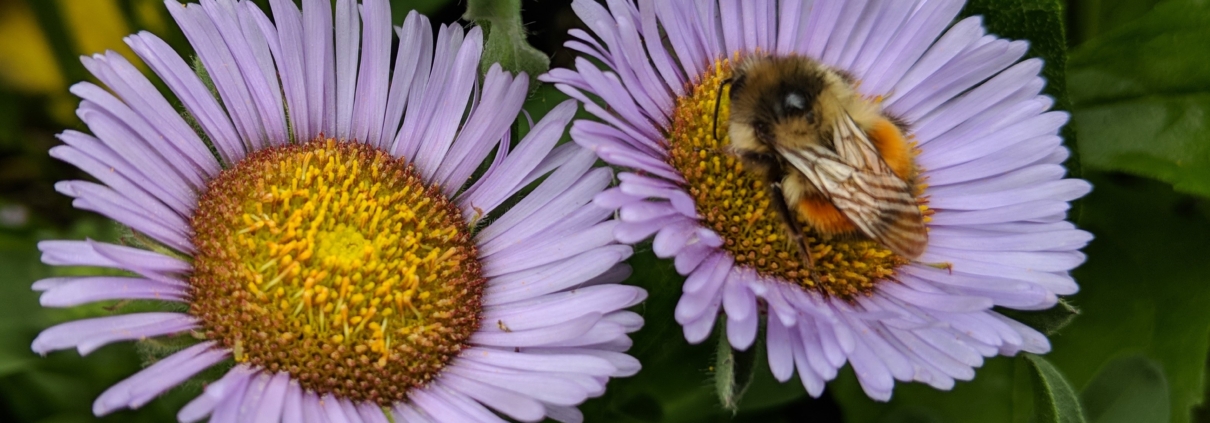

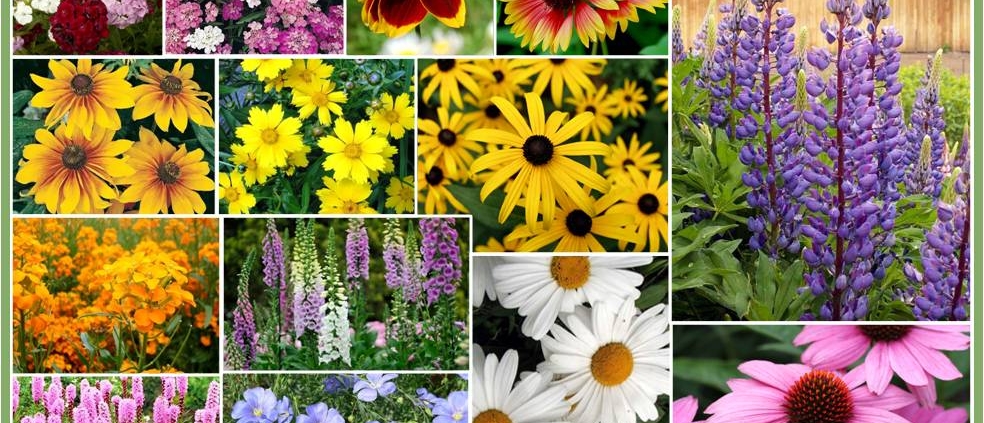
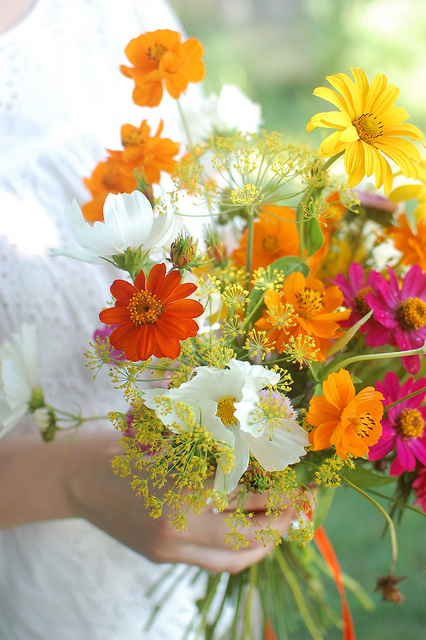 Most of us want to bring the beauty and fragrance of flowers into our homes, but worry about plundering the garden beds by cutting off blooms. The solution? Plant a cutting garden! It needn’t be large but, if well planned, will reward you with glorious bouquets all season long. A few guidelines and suggestions to help you get started.
Most of us want to bring the beauty and fragrance of flowers into our homes, but worry about plundering the garden beds by cutting off blooms. The solution? Plant a cutting garden! It needn’t be large but, if well planned, will reward you with glorious bouquets all season long. A few guidelines and suggestions to help you get started.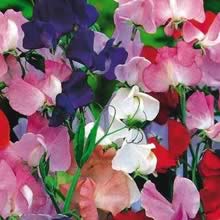 Annuals: Often started from seed, so they are inexpensive to experiment with. Try one new thing each year, just for fun!
Annuals: Often started from seed, so they are inexpensive to experiment with. Try one new thing each year, just for fun!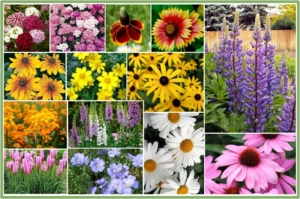 Perennials
Perennials